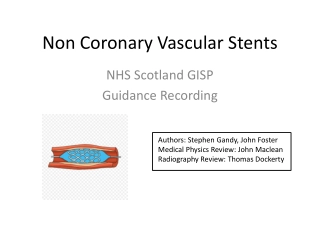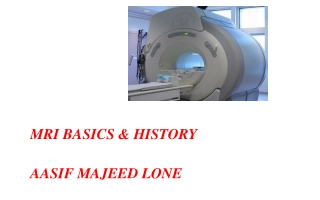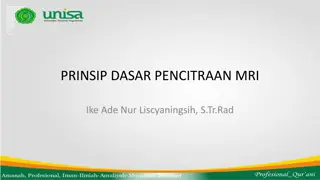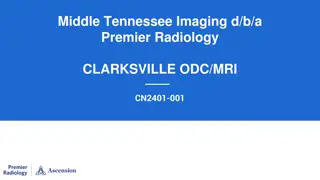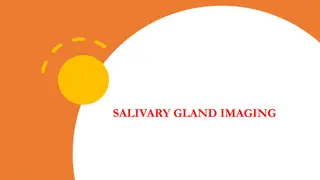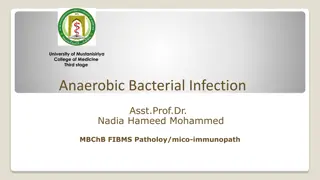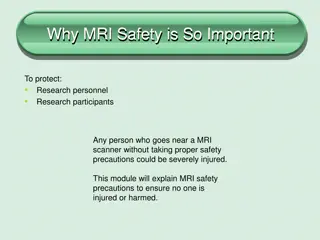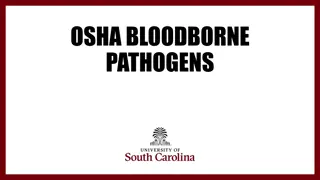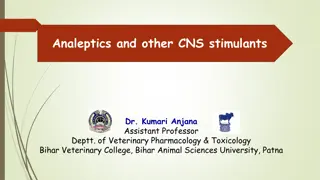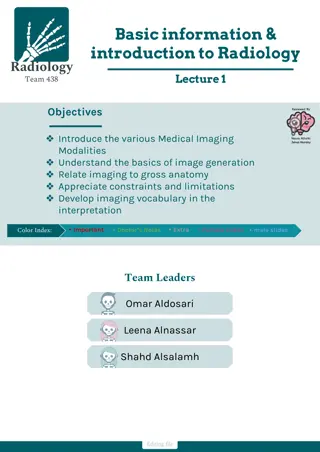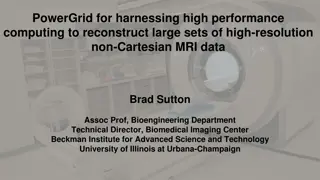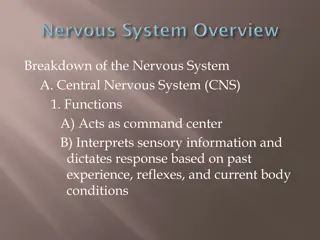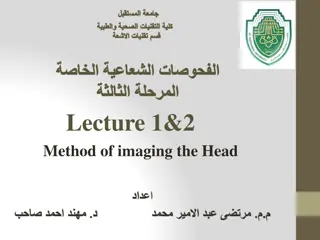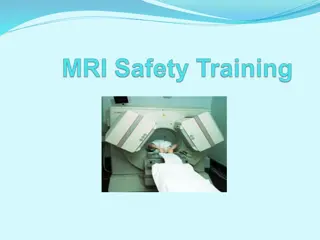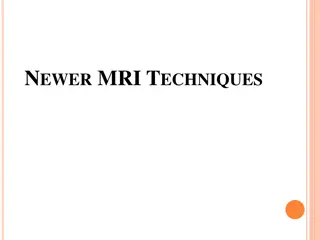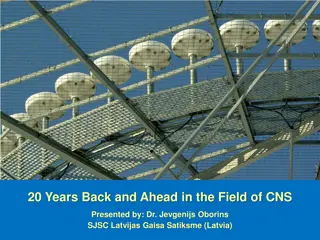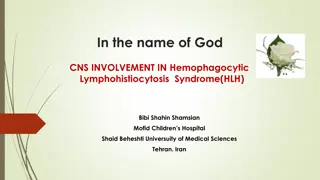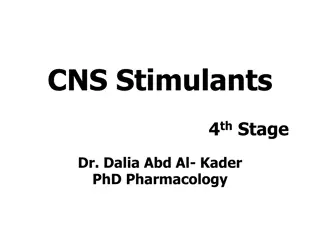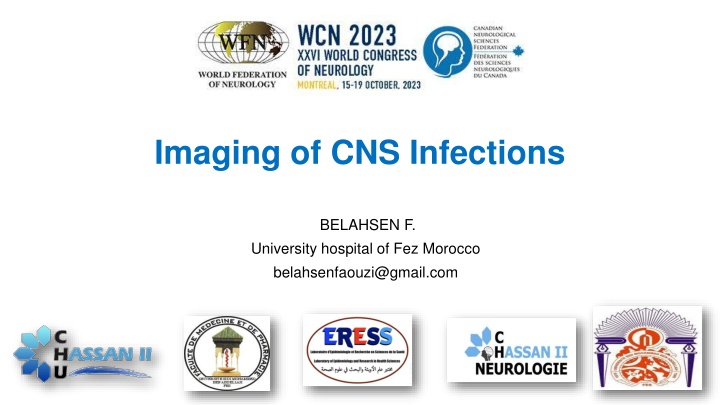
Imaging of CNS Infections: Recognizing Pathogens with MRI
In this educational resource, learn to recognize CNS infections on brain imaging, distinguish radiological signs of specific germs, and propose etiological diagnoses in immunocompromised patients. Key messages cover the variability of CNS infections, imaging modalities, and detailed characteristics of infections like TB meningitis, herpes encephalitis, toxoplasmosis, Cryptococcal infection, and Progressive Multifocal Leukoencephalopathy. Visual aids complement the learning objectives, enhancing understanding of these critical diagnostic considerations.
Download Presentation

Please find below an Image/Link to download the presentation.
The content on the website is provided AS IS for your information and personal use only. It may not be sold, licensed, or shared on other websites without obtaining consent from the author. If you encounter any issues during the download, it is possible that the publisher has removed the file from their server.
You are allowed to download the files provided on this website for personal or commercial use, subject to the condition that they are used lawfully. All files are the property of their respective owners.
The content on the website is provided AS IS for your information and personal use only. It may not be sold, licensed, or shared on other websites without obtaining consent from the author.
E N D
Presentation Transcript
Imaging of CNS Infections BELAHSEN F. University hospital of Fez Morocco belahsenfaouzi@gmail.com
Learning objective To recognize a CNS infection on brain imaging To recognize the radiological signs suggestive of neuromeningeal tuberculosis To identify radiological signs suggestive of a specific germ To propose an etiological diagnosis of a nervous system infection in an immunocompromised patient
Key message (1) CNS infections are variable and multiple and depend on the state of immunity of the patients. The classification of CNS infections can be done according to the organism responsible, the location and structures affected in the CNS and according to the route of transmission. The 2 main neuroimaging modalities used in most medical centers are computed tomography (CT) and magnetic resonance imaging (MRI) MRI is the main radiological tool in diagnosing CNS infection due to the high anatomical resolution and tissue contrast, multiplanar acquisition and high sensitivity to contrast enhancement. It allows for identifying various infectious patterns and differentiates them from vascular pathologies or neoplasms. It may raise suspicion about a specific pathogen.
Key message (2) For TB meningitis, MRI show hypersignal on FLAIR in the basal cisterns and contrast studies will show uniform and intense enhancement of the cisterns extending into the Sylvian fissures. The Tuberculomas is hypointense on T2-weighted sequence with associated irregular ring enhancement. Liquefied areas may be T2 hyperintense. They can also possess a miliary appearance with many lesions only a few millimeters in size. During Herpes encehalitis, FLAIR can show asymmetric hypersignal of the temporal lobes and insula. SWI may show petechial hemorrhages. For Toxoplasmosis MRI show multiple areas of T2 hyperintensites, with nodular or ring-like enhancement surrounded by vasogenic edema. A small enhancing nodule within and adjacent to the enhancing ring (eccentric target sign) is highly suggestive of toxoplasmosis.
Key message (3) During Cryptococcal infection, gelatinous pseudocysts appear on MRI as rapidly growing, nonenhancing cysts , hypointense to brain parenchyma on T1 and hyperintense on T2 with FLAIR suppression similar to CSF signal. Perilesional edema and contrast enhancement are generally not seen. They tend to concentrate within dilated Virchow- Robin spaces in or around the basal ganglia and the corticomedullary junction. MR suggestive of Progressive Multifocal Leukoencephalopathy (PML) include the presence of bilateral asymmetric white matter lesions that are hyperintense on T2-WI and hypointense on T1-weighted imaging, and involve the subcortical U fibers with scalloped appearance. PML lesions usually have no significant mass effect and no contrast enhancement. DWI may detect areas of active disease more effectively than other sequences.
References 1. Victor Cuvinciuc*, Maria Isabel Vargas, Karl-Olof Lovblad, Sven Haller Diagnosing infection of the CNS with MRI; Imaging Med. (2011) 3(6), 689 710 2. Ivy Nguyen DO , Kyle Urbanczyk DO , Edward Mtui MD , Shan Li MD , Intracranial CNS infections: a literature review and radiology case studies, Seminars in Ultrasound CT and MRI (2019), doi: https://doi.org/10.1053/j.sult.2019.09.003 3. Martin Alexander Schaller Felix Wicke Christian Foerch Stefan Weidauer; Central Nervous System Tuberculosis: Etiology, Clinical Manifestations and Neuroradiological Features Clin Neuroradiol (2019) 29:3 18 https://doi.org/10.1007/s00062-018-0726-9 4. Mohamad Abdalkader, Juliana Xie, Anna Cervantes-Arslanian, Courtney Takahashi, Asim Z. Mian; Imaging of Intracranial Infections. Semin Neurol 2019;39:322 333. https://doi.org/ 10.1055/s-0039-1693161. 5. Neha Choudhary Sameer Vyas Chirag Kamal Ahuja Manish Modi Naveen Sankhyan Renu Suthar Jitendra Kumar Sahu Manoj K. Goyal Anuj Prabhakar Paramjeet Singh. MR vessel wall imaging in cerebral bacterial and fungal infections. Neuroradiology (2022) 64:453 464. 6. C. Sundaram, S. K. Shankar, Wong Kum Thong, and Carlos A. Pardo-Villamizar. Pathology and Diagnosis of Central Nervous System Infections. Patholog Res Int. 2011;2011:878263. doi: 10.4061/2011/878263. 7. Nathaniel C. Swinburne, Anmol G. Bansal, Amit Aggarwal, Amish H. Doshi. Neuroimaging in Central Nervous System Infections Curr Neurol Neurosci Rep (2017) 17: 49 DOI 10.1007/s11910-017-0756-8

